I don’t know a single Chinese restaurant that doesn’t serve vegetable noodles, and for good reason – they’re delicious.
What bothers me is that restaurants still manage to oversimplify a dish that is already very simple. The result is bland, low-quality noodles where all you taste is soy sauce.
Chinese cuisine is so simple and delicious that some establishments should be ashamed.
The main ingredients for vegetable noodles
Light soy sauce: a key ingredient that packs plenty of flavor. Do not confuse it with dark soy sauce!
Dark soy sauce: also not to be confused with light soy sauce. It adds color (we eat with our eyes!) and, more importantly, depth and complexity to the flavor.
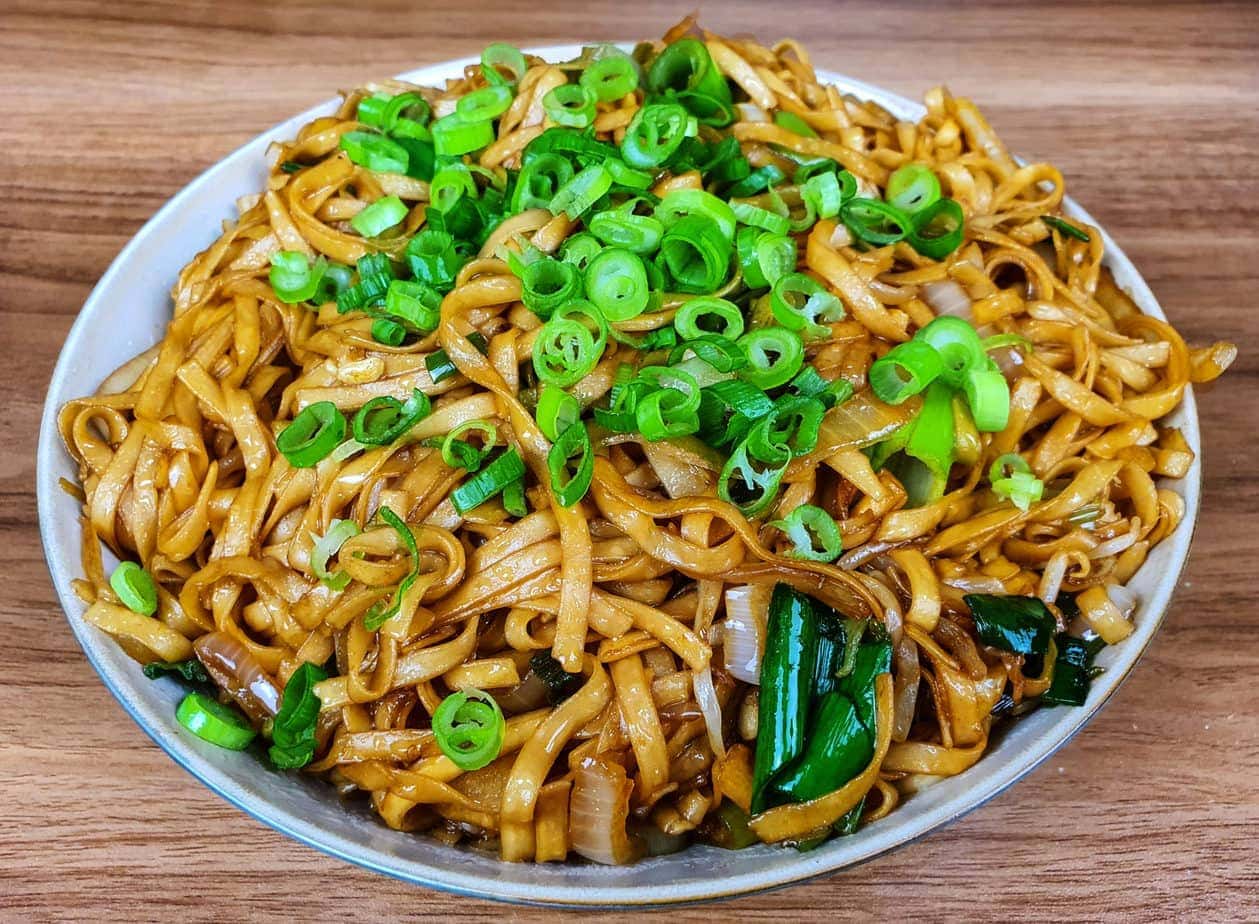
In general, you’ll find it in any Asian grocery store and often in regular supermarkets as well. If you are not familiar with them, I have written a very comprehensive article about the different soy sauces and how they’re made.
Sesame oil: Use it sparingly. I love this product, but its flavor is very strong and can easily mask the other ingredients if you overdo it. Read my article on sesame oil to learn more about the different kinds available.
Soybean sprouts/bean sprouts: They are often overlooked in home cooking, yet they add a unique flavor that instantly screams “Chinese restaurant” – so do not even think about skipping them.
By popular demand on Instagram and TikTok, here is the brand of noodles I use for this recipe:
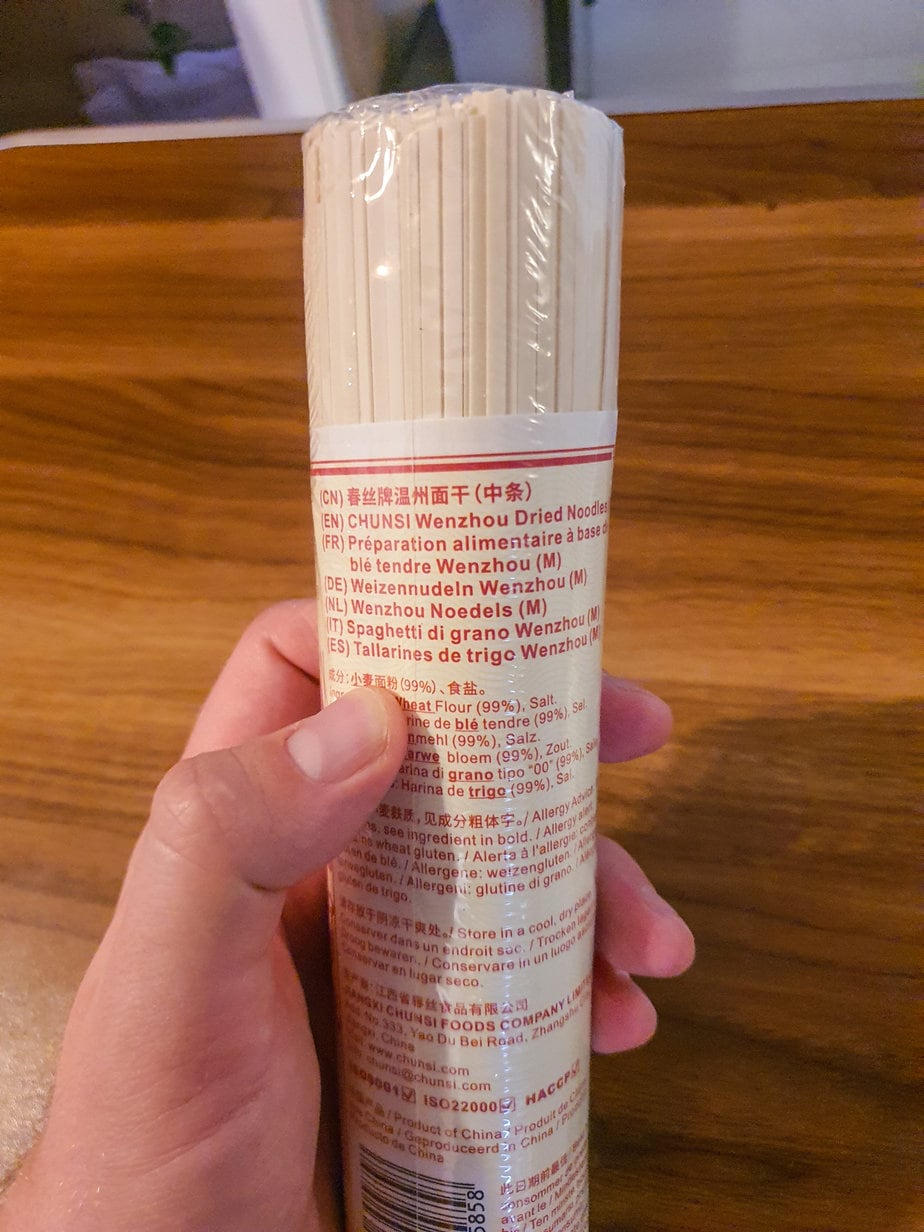
Tips for vegetable noodles
Rinse the noodles under cold water after boiling: this stops the cooking process, firms them up, and gives a better texture in the final dish.
You can switch up the vegetables; I really like adding Chinese cabbage, which pairs wonderfully (here is a noodle recipe where I include it). If the different kinds of soy sauce intimidate you, take a look at my complete article on the various types of soy sauce
How to serve vegetable noodles?
Vegetable noodles can stand alone, but I recommend serving them with a protein such as beef, chicken, or pork. For an all-in-one meal, try my stir-fried shrimp noodles
For example, my simplified caramel pork pairs perfectly with them. Cumin beef is also delicious, but its flavor profile is totally different – this one is on the spicy side.
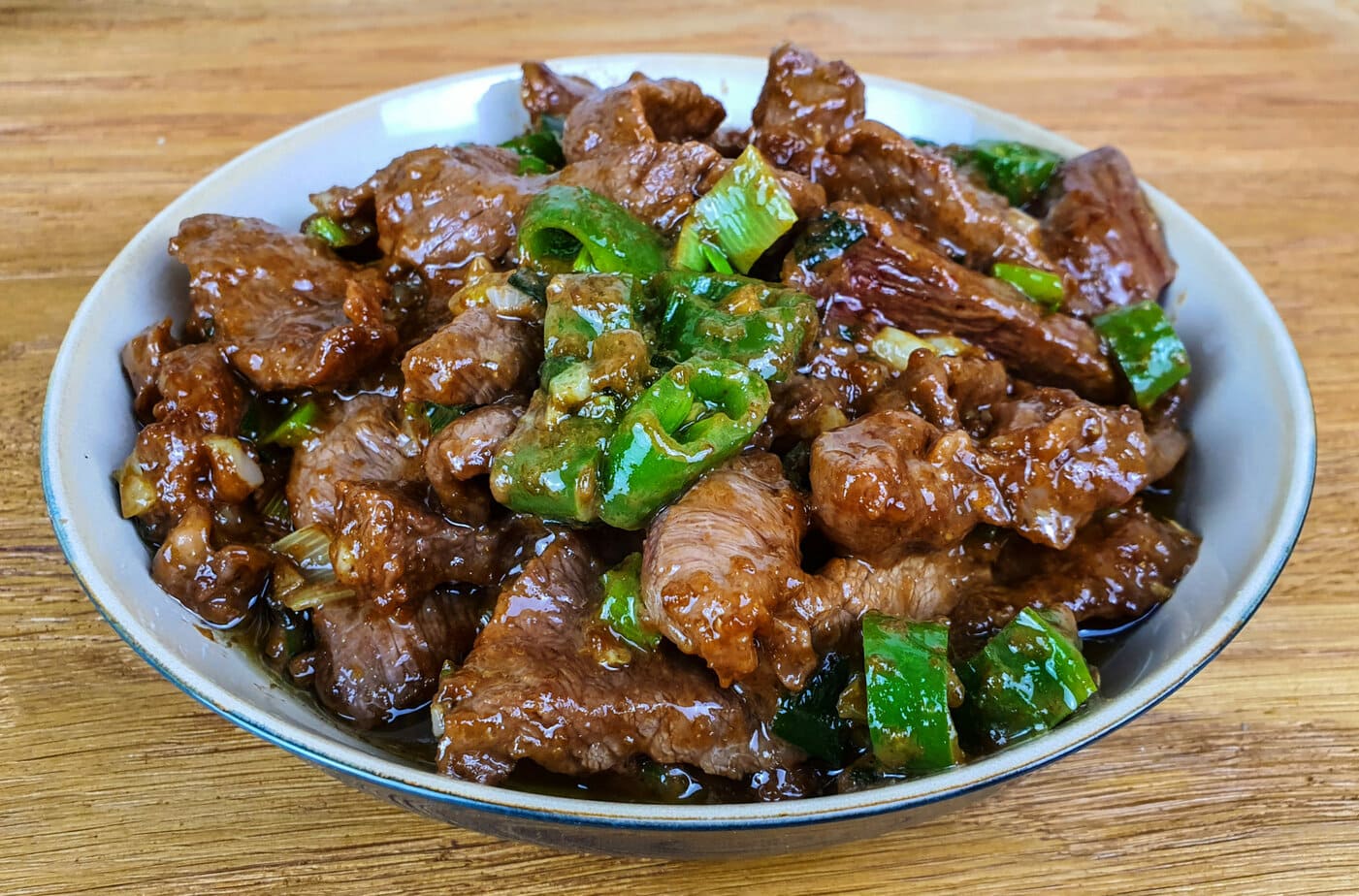
Another option is chicken dishes such as General Tso’s chicken or garlic and honey chicken.
If you do not feel like deep-frying, try my hoisin sauce chicken; it is very fresh and light.
In short, there is no right time to eat vegetable noodles. I have enjoyed them for breakfast, lunch, dinner, and even in the middle of the night, so I am the last person who will judge how you choose to enjoy this recipe.
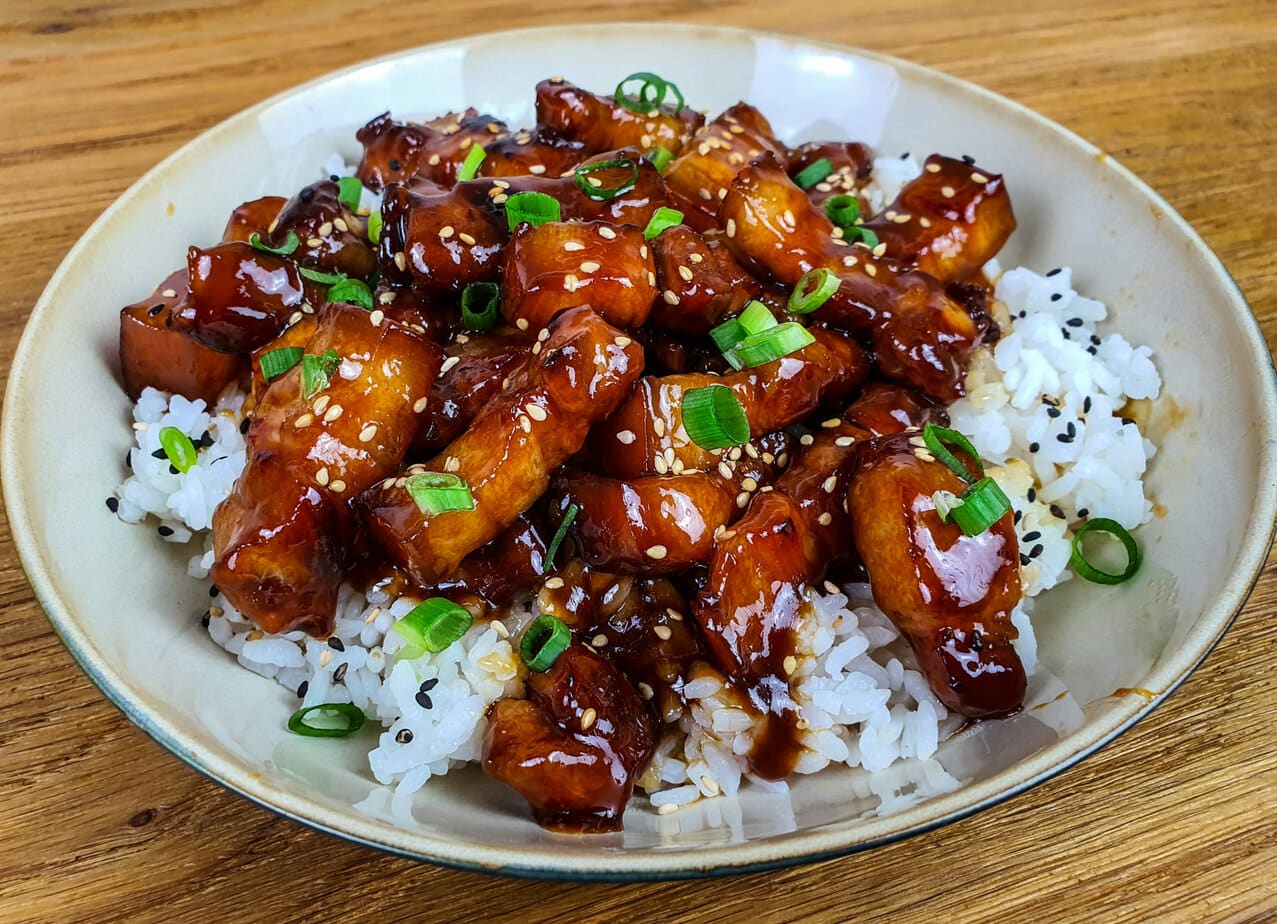
My only prohibition is adding bell peppers: no, no, and again no! Their flavor would completely distort the dish and would make me sad 🙁
With that, much love and enjoy your meal
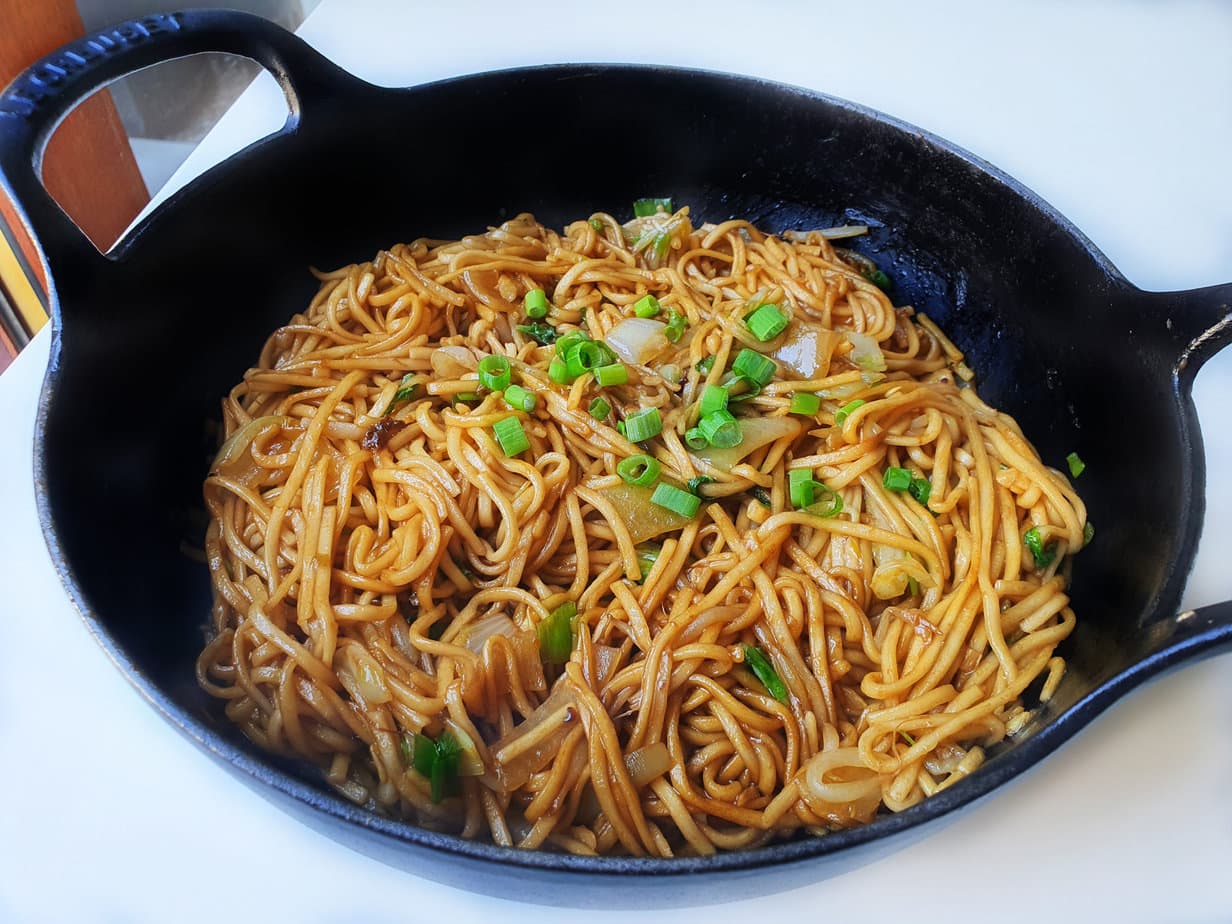
Takeout-style Vegetable Stir-Fried Noodles
Equipment
- 1 Wok
Ingredients
- 400 g noodles pre-cooked
- 2 onions sliced
- 1 tablespoon ginger minced
- 5 garlic cloves minced
- 1 big handful bean sprouts (or mung bean sprouts)
- 5 stems green onions white parts minced, green parts thinly sliced
SAUCE
- 1 tablespoon sesame oil
- 1 tablespoon peanut oil
- 3 tablespoon light soy sauce
- 1 tablespoon dark soy sauce
- 1 pinch salt
- 1 teaspoon black pepper
Instructions
- Over high heat in a thin layer of hot oil, sauté the garlic, ginger, and white parts of the green onions for 3 minutes, stirring.5 garlic cloves, 5 stems green onions, 1 tablespoon ginger
- Add the onion and bean sprouts and stir for 5 minutes until the onion becomes translucent.1 big handful bean sprouts, 2 onions
- Add the green parts of the green onions and stir for 1 min.5 stems green onions
- Add the noodles and the sauce, stir for 5–7 minutes.400 g noodles, 1 tablespoon sesame oil, 1 tablespoon peanut oil, 3 tablespoon light soy sauce, 1 tablespoon dark soy sauce, 1 pinch salt, 1 teaspoon black pepper

